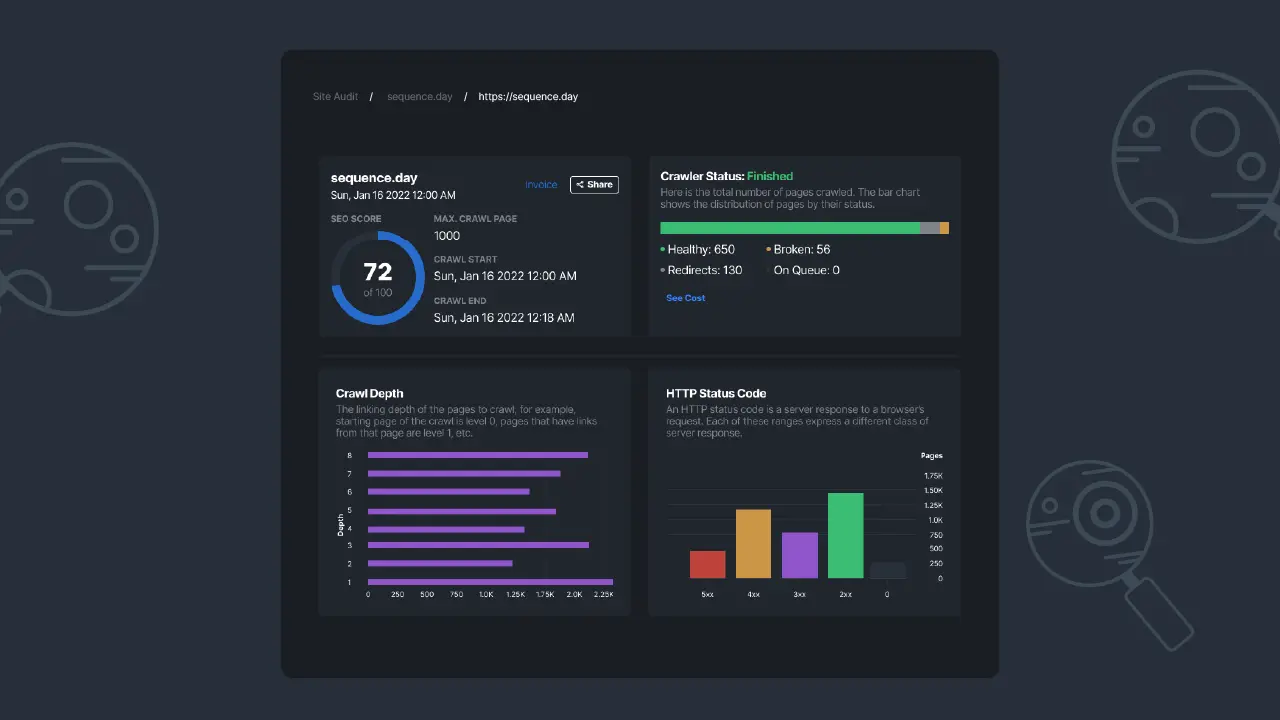Off-Page SEO Audit 101: A Definitive Guide
While on-page SEO focuses on optimizing the content, structure, and elements within a webpage, off-page SEO broadens the horizon by looking beyond the website itself. Both are important elements to ensure website performance.
In this article, we will specifically discuss off-page SEO audits starting from their definition, their importance, the metrics, and how to do it right with Sequence Stats. For a complete explanation, read this article.
What Is Off-Page SEO?
Off-page SEO refers to all the strategies and activities undertaken outside your website to boost its visibility and credibility on the internet. This includes activities to earn backlinks from reputable websites, engage with your audience on social media platforms, and manage your online reputation effectively.
Off-page SEO is important because search engines like Google view it as a vote of confidence from other online entities. When high-quality websites link to your content, it signals to search engines that your content is authoritative and valuable. Consequently, this can positively impact your search engine rankings and organic traffic.
It is also important to do an off-page SEO audit to make sure that there is no issue regarding the effort. This way, you can optimize your strategy and analyze website performance.
Off-Page SEO Metrics
Off-page SEO metrics are essential for assessing the effectiveness of your off-site optimization efforts and understanding how they impact your website's online authority and visibility. Here are key off-page SEO metrics to monitor:
1. Backlink Metrics
When talking about off-page SEO, a backlink is something that comes up first. Indeed, backlink is an important element that should be audited thoroughly and regularly. Here are some checklists when you conduct a backlink audit:
- Total Backlinks: The total number of backlinks pointing to your website.
- Referring Domains: The number of unique domains that link to your site.
- Domain Authority (DA): A metric that measures the overall authority of a domain linking to your site.
- Page Authority (PA): Similar to DA but focused on the authority of a specific page linking to your site.
- Anchor Text Distribution: The variety and relevance of anchor text used in backlinks.
- Link Quality: Assess the quality of backlinks, considering factors like the linking site's authority and relevance to your content.
2. Social Media Metrics
Social media is also an important element to support website performance. Through good social media integration, businesses can reach wider audiences and lead them to visit their website. Thus, making sure that the social media elements are performing well is important. Here are the metrics:
- Social Shares: The number of times your content is shared on social media platforms.
- Likes and Reactions: The engagement your social media posts receive.
- Followers: The size and growth of your social media audience.
- Social Signals: How social media activity correlates with your website's performance in search results.
3. Online Reputation Metrics
The last metric is the online reputation metric. Here are some elements of it:
- Brand Mentions: The number of times your brand is mentioned across the web.
- Sentiment Analysis: Analyzing the sentiment (positive, negative, or neutral) of brand mentions and reviews.
- Review Ratings: Assessing the ratings and reviews on platforms like Google My Business.
How to Conduct Off-page SEO Audit
Here's a step-by-step guide on how to conduct an effective off-page SEO audit:
1. Define Your Goals
Before diving into the audit, establish clear objectives and goals. Define your goal, whether it's improving backlink quality, increasing social media engagement, or enhancing your online reputation. It will guide the audit process.
2. Pick The Right Audit Tool
To generate the data of your off-page element, it is better to use an SEO tool rather than do it manually. You can use Sequence Stats as your off-page SEO audit tool.
 |
|---|
| Picture 1 - Site Audit in Sequence Stats |
3. Strategy and Action Plan
Develop a comprehensive off-page SEO strategy and action plan to address the identified areas for improvement. You can prioritize strategies for link building, social media optimization, and reputation management.
4. Implementation
Next, put your off-page SEO strategy into action. Execute the planned tactics, such as outreach for link building, social media posting and engagement, and reputation management activities.
5. Monitoring and Tracking
After the implementation, it is important to continuously monitor the performance of your off-page SEO efforts using the metrics and KPIs established in Step 1. This activity ensures ongoing optimization.
That’s how to conduct an off-page SEO audit in a simple way. To audit your whole site, you can always rely on Sequence Stats which is able to serve you the data. Register now and enjoy the free trial for one year plus a free balance you can use to track keywords!